-
TrimTouring
-
Engine2.0L I4 + Electric Drive Motor
-
Power212 HP
-
DrivetrainAWD
-
Curb Weight3,763 LBS
-
Seating5
-
Cargo33.2 / 68.7 Cu-Ft
-
MPG40/35/38 MPG city/hwy/comb
-
Base Price$28,870
-
As Tested Price$37,070
TUCSON, Ariz. – The CR-V has been the segment’s top seller since its introduction, moving more than 5 million units in the past 23 years. For Honda, its sales juggernaut accounted for more than a quarter of the automaker’s 2019 total and a whopping 60 percent of its CUV sales. With the 2020 Honda CR-V Hybrid, however, the brand is stepping into territory where few have ventured before.
The Nissan Rogue Hybrid has come and gone. The Ford Escape Hybrid first arrived way back as a 2005 model, but disappeared for a generation until returning this year. The Toyota RAV4 waited 20 years to debut its hybrid, but now in its second generation, has actually become Toyota's best-selling hybrid model. That alone represents a strong case for the CR-V Hybrid, not to mention the dearth of competitors.
We get Honda and others dragging their feet, though. Hybrid powertrains are not cheap to produce, and they're at their most efficient in smaller, lighter vehicles like sedans and hatchbacks, which can see EPA ratings of more than 50 mpg (see Honda Insight). But after personally experiencing a rather dismal fuel economy return while road tripping with a regular ol’ 2020 Honda CR-V, I was eager to see how much gas and money the first CR-V Hybrid could save.
To compare the CR-Vs, all gas-powered models are equipped with a 1.5-liter turbocharged four-cylinder engine that is mated to a CVT. Power is rated at 190 horsepower and 179 pound-feet of torque. Both front-wheel and all-wheel drive are available. The 2020 CR-V Hybrid, by contrast, is all-wheel-drive only and produces a combined output of 212 hp and 232 lb-ft of torque, making it the CR-V's forever-awaited performance upgrade.
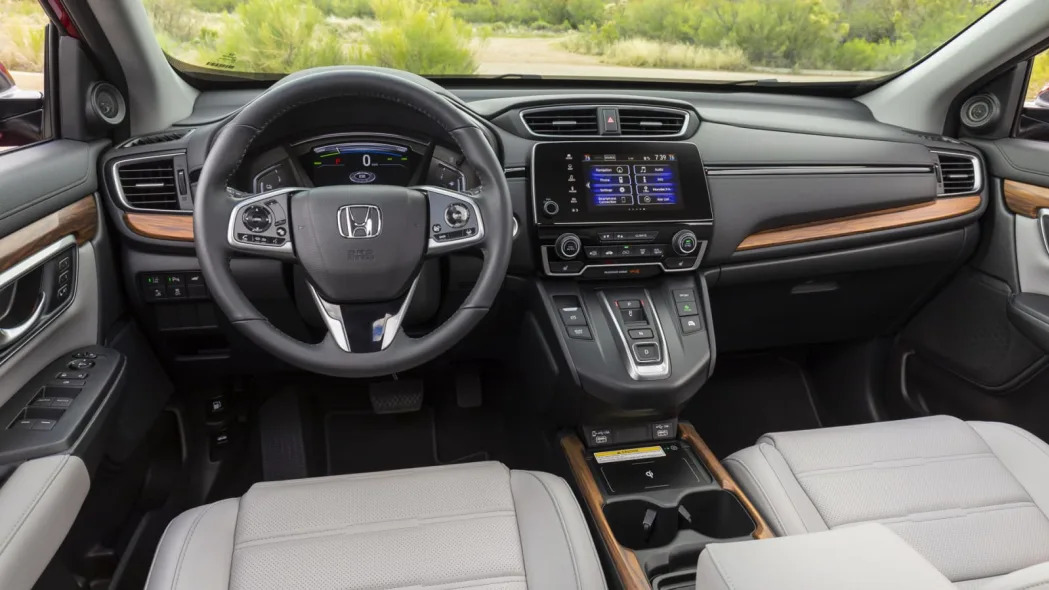
Shared with the Accord Hybrid, the CR-V system can operate as either a series- or parallel hybrid. Most of the time, it's a series hybrid, meaning the wheels are exclusively powered by the electric drive motor. The 2.0-liter four-cylinder is there to replenish the battery, which results in acceleration that feels and sounds more like an electric car than a RAV4 Hybrid does. However, it also means the gas engine can come on at times that don't correspond with what your right foot is doing. There is an exception to this, though: Under certain circumstances, such as when on a steady highway cruise, the engine can in fact connect to the front wheels for greater efficiency. This is when it's a parallel hybrid.
For comparison sake, the RAV4 Hybrid is strictly a parallel system, directly powering the wheels with its electric motors, gasoline engine or a combination of both. They also differ in their all-wheel-drive systems. Whereas Toyota effectively achieves AWD by putting an electric motor on the rear axle, Honda uses the same mechanical transfer case and propeller shaft as the gas-only model.
Our drive of the 2020 Honda CR-V Hybrid Touring took place in the desert flats of Tucson, Ariz. Aside from the occasional roller coaster-derived country road, there wasn’t much in terms of topography challenges. Our 65-mile city loop (zero highway roads) yielded a respectable 40.5 mpg, per the driver information display. This matches the EPA numbers of 40 city, 35 highway, and 38 combined mpg.

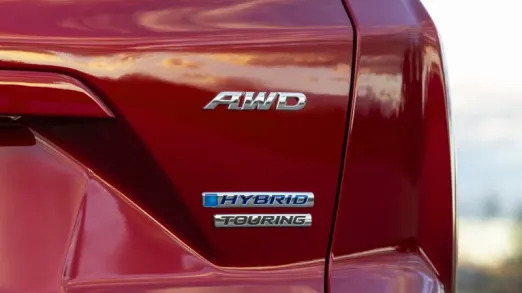
Neither myself nor my driving partner did anything out of the ordinary – no hypermiling or aggressive coasting. Utilizing a mix of drive modes (of which the hybrid has three: EV, Econ and Sport) and regenerative braking levels (also three), achieving that 40-plus mpg was rather effortless. EV mode also allows for electric-only travel for up to a mile based on certain conditions such as battery strength and throttle. So, it’s a safe bet anyone who actually tries to be fuel efficient can easily exceed the posted EPA numbers.
By contrast, a similarly equipped AWD gas version is EPA-rated at 27/33/29 mpg. And you’d have to put in the work to achieve those figures. I recently did a 1,276-mile trek between Detroit and NYC with a 2020 Honda CR-V Touring AWD. Ninety-four percent of those miles were on the freeway. I coasted as best I could on descents and lowered my speed during uphill sections. And I didn’t go more than 7-8 mph over the posted speed limits. Still, my overall mpg was an unimpressive 25.9.
Granted, the average temperature was about 40 degrees on Interstate 80 in late February versus the almost-70 degrees of Arizona in early March. Still, disappointing fuel economy isn't unusual for vehicles with small-displacement turbo engines. The Hybrid, especially with its on-demand torque, would have yielded better results (not to mention fewer fuel stops) and its Sport mode was actually fun to drive.
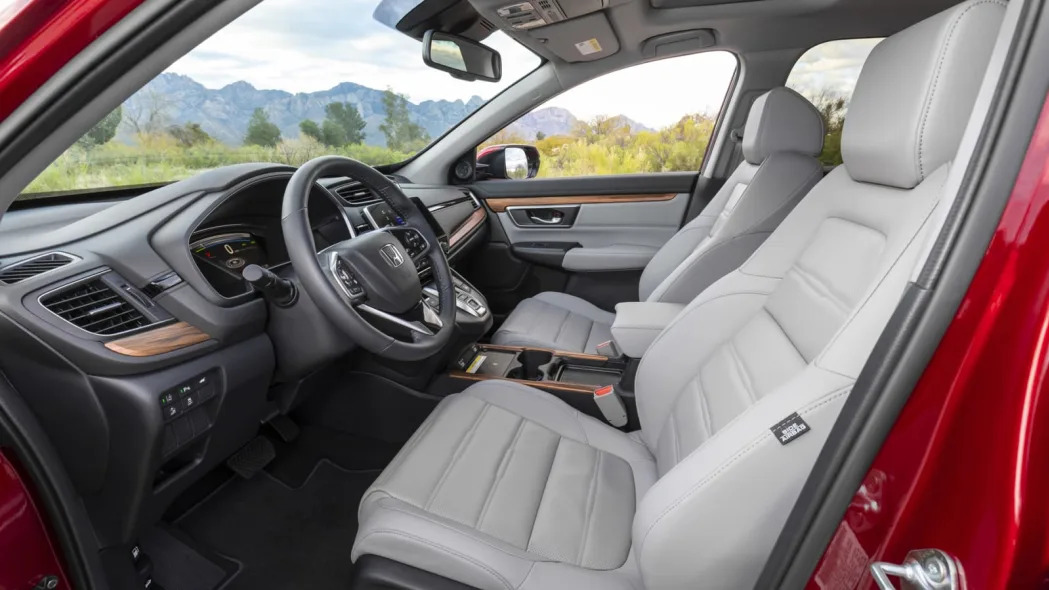
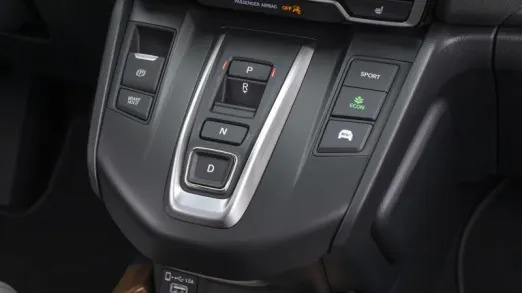
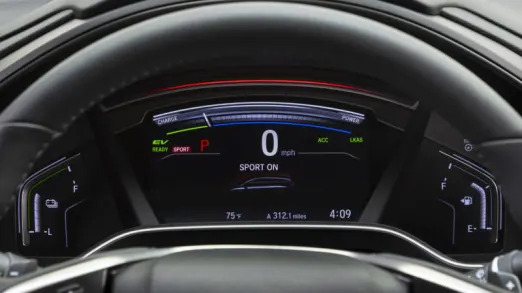
In terms of comfort, a CR-V is a CR-V. For example, the leather-trimmed seats are still stiff and with just-OK bolsters. But the interior design remains inoffensive and features the same model-line amenities, like the configurable center console and fold-flat rear seats. Headroom, legroom, and passenger volume also are unchanged in the Hybrid, but it does lose some cargo capacity because of the battery packaging.
Where the gas CR-V offers 39.2 cubic feet with the rear seats up and 75.8 cubic feet with them down, the Hybrid model offers 33.2 and 68.7 cubic-feet, respectively. Those numbers are still better than most compact SUV competitors, however, and easily beat out the Escape Hybrid (60.8 cubic-feet). The RAV4 Hybrid just beats the CR-V Hybrid (37.6 and 69.8 cubic-feet, respectively), which is the reverse of their non-hybrid versions. We recently compared their cargo capacities here.
There are two noticeable interior differences between the gas-only and hybrid CR-V. First, there are steering wheel paddles that select regenerative braking aggressiveness. Then, there is the shifter. To maintain a “Honda hybrid” theme, the CR-V hybrid features a push-button gear selector in place of the standard shifter found in gasoline models. This is in line with the Accord, Insight and Clarity, but increased familiarity does not equal acceptance. It's needlessly complicated. Also, one would imagine that getting rid of the protruding gear shifter would open up the interior space a little bit, but that’s not the case here. The CR-V's center stack remains an unsightly bulk.

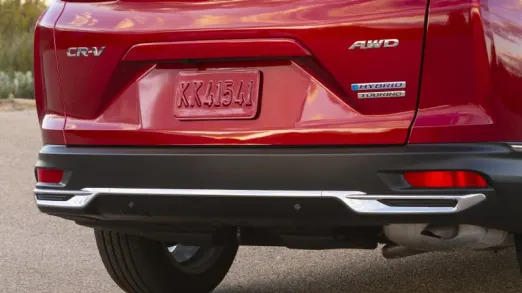
The exterior changes between the regular and hybrid CR-V models are a tad more distinctive, but just a tad. The CR-V Hybrid features LED fog lights (EX trim and above) as well as an updated hidden-exhaust rear bumper. If hard-pressed to notice those, there is the more obvious “Hybrid” badging and the blue-outlined Honda logos.
Those are the visual changes, though. When in EV mode, the Hybrid activates an acoustic vehicle alerting system that is noticeable to pedestrians and others outside of the vehicle. The AVAS noise is even more pronounced when the CR-V Hybrid is shifted into reverse. The closest description that comes to mind is if robots could sing. Not cringy but not something I’d attend a concert for either.
The 2020 Honda CR-V Hybrid AWD is available in LX, EX, EX-L, and Touring trims. The hybrid model starts at $28,870 (includes the $1,120 destination fee) while the gas version starts at $27,645. For a mere $1,225 premium, regardless of trim level, the CR-V Hybrid offers much improved fuel economy, more power, instant torque, better driving engagement, little compromise on utility, and a carryover of safety features and creature-comfort amenities. The CR-V Hybrid also earned an IIHS Top Safety Pick distinction like its gasoline sibling.
On sale now, Honda anticipates 10% of CR-V sales will constitute of the hybrid. And with only the Ford Escape and Toyota RAV4 offering hybrid contenders, Honda should have no trouble continuing its segment sales dominance.
Related Video:
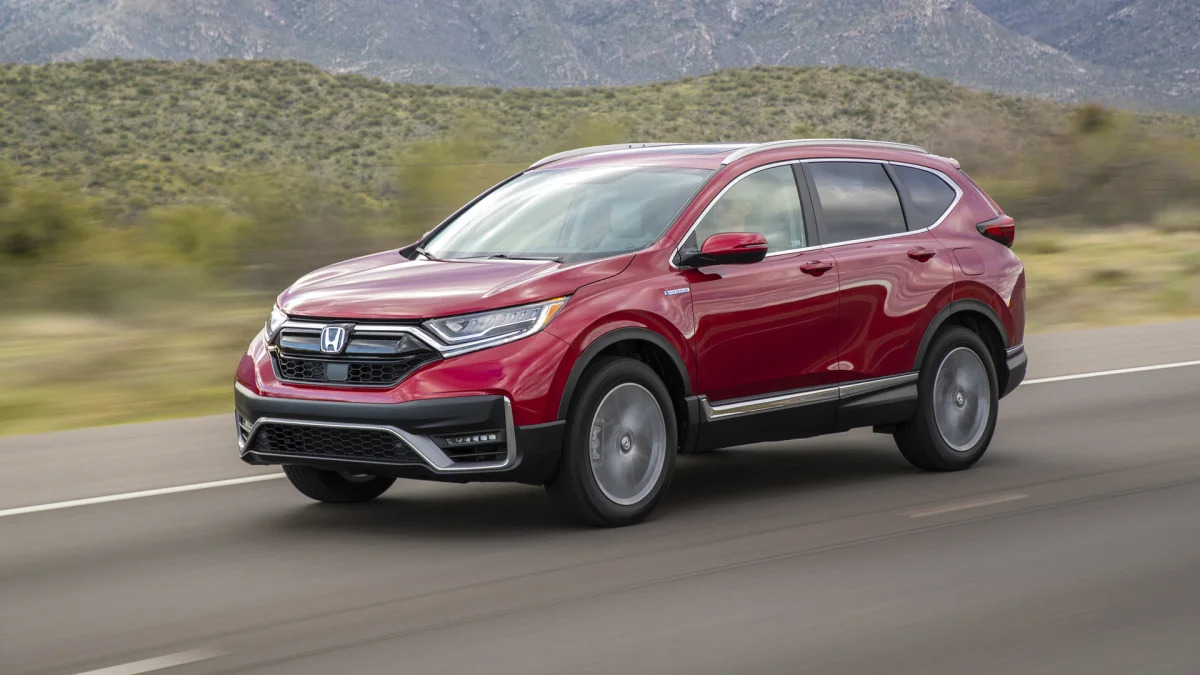









Sign in to post
Please sign in to leave a comment.
Continue